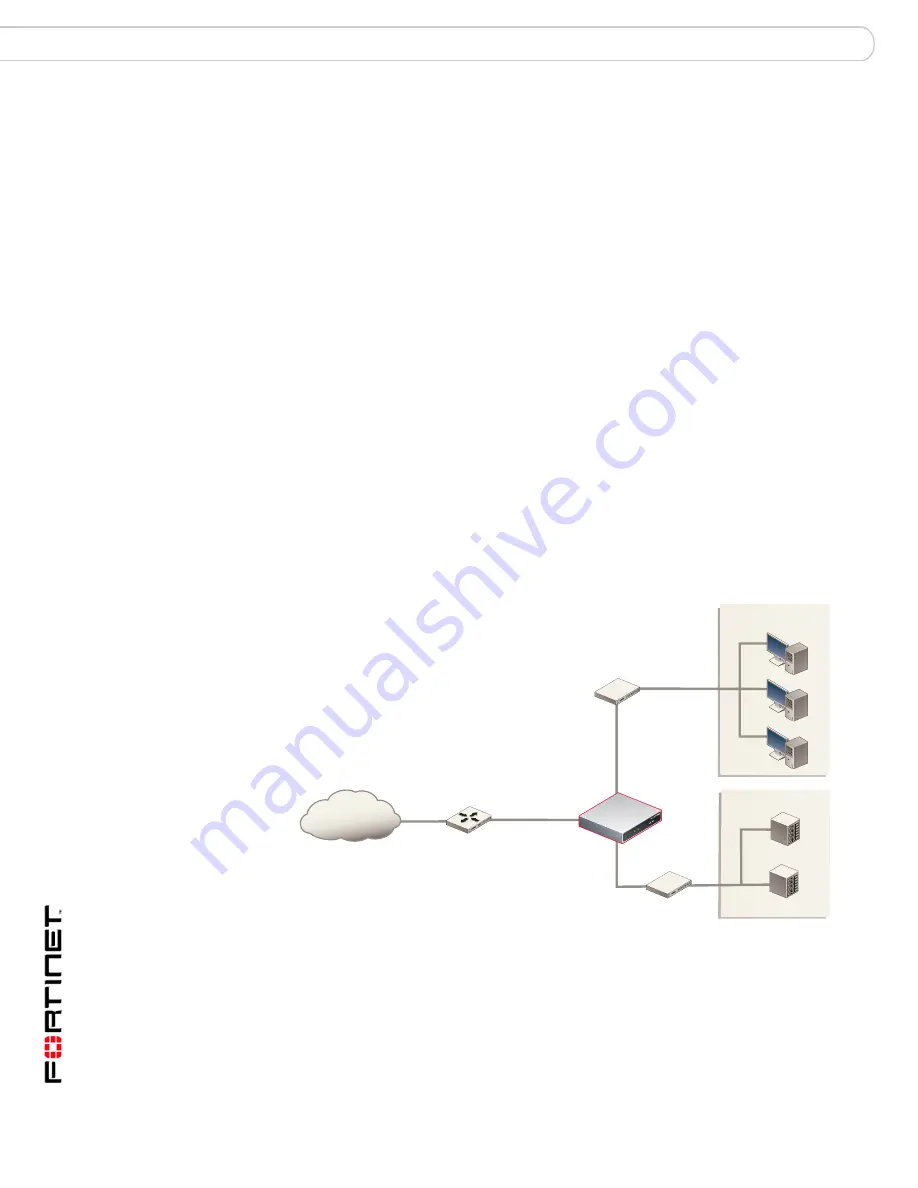
FortiGate-800 and FortiGate-800F FortiOS 3.0MR4 Install Guide
38
01-30004-0269-20070215
NAT/Route mode installation
Configuring the FortiGate unit
Configuring the FortiGate unit to your network(s)
When you complete the initial configuration, you can connect the FortiGate unit
between your internal network and the Internet and connect an additional network
to the DMZ interface.
The following network connections are available on the FortiGate unit:
• Internal for connecting your internal network
• External for connecting to the Internet
• DMZ for connecting to a DMZ network
To connect to the FortiGate unit
1
Connect to the Internal interface to the hub or switch connected to your internal
network.
2
Connect the External interface to the Internet.
Connect to the public switch or router provided by your ISP. If you are a DSL or
cable subscriber, connect the External interface to the internal or LAN connection
of your DSL or cable modem.
3
Optionally connect the DMZ interface to the DMZ network.
You can use a DMZ network to provide access from the Internet to a web server or
other server without installing the servers on your internal network.
In
Figure 9 on page 38
, the example shows an internal network connected to a
user-defined internal interface and a user-defined external interface.
Figure 9: Example NAT/Route mode connections.
Configuring the networks
If you are running the FortiGate unit in NAT/Route mode, your networks must be
configured to route all Internet traffic to the IP address of the interface where the
networks are connected.
Internet
Router
(or public switch)
Internal network
Hub or switch
Internal
External
Hub or switch
DMZ network
Web Server
Mail Server
DMZ












































